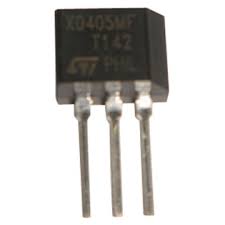
In this project we examine one of the most valuable circuits to be invented - the flip flop. Originally it was designed with VALVES, along with its simpler version (without the two capacitors - called a bi-stable Multivibrator), it was realised it could store a "bit" of information. The bi-stable Multivibrator circuit required an input pulse to the left side of the circuit and the load (say a globe) stayed ON when the signal was removed. A pulse to the other side of the circuit turned the globe OFF. This was the first time an electronic circuit had stored a "piece of information." This was the beginning of the COMPUTER AGE.
When you realise each letter on this page requires 8 circuits like this to store the "bits" you can see how little each "storage element" can hold. That's why you need millions of cells similar to the Flip Flop circuit to hold data for even the simplest application.
RECOGNISING A FLIP FLOP CIRCUIT
The Flip Flop is a symmetrical arrangement using two transistors with cross-coupling. Each transistor has a base bias resistor (10k in our case) and a LED with 470R resistor in the collector lead to form the collector load.
The circuit consists of two identical halves and is called a Flip Flop because one half is ON while the other half is OFF. The ON half is keeping the OFF half OFF but it cannot keep it off indefinitely and gradually the OFF half turns ON via the 10k base-bias resistor.
This drives the ON side OFF and the circuit changes state. In other words it flips over. The same events occur in the other half of the cycle and the circuit eventually flops back again.
This sounds very complicated but in reality the circuit is quite simple in operation as one half is exactly the same as the other and there's only 5 components in each half.
THE FLIP FLOP IS A FREE-RUNNING MULTIVIBRATOR
The circuit is self-starting and only one LED is on at a time. It is a free-running multivibrator (this means it does not stop) and we will describe its operation in a non-technical way. A free-running multivibrator is also called an astable multivibrator (meaning is has no stable states) and that is why it flips from one state to the other continuously.
The standard way to draw this type of multivibrator is to show the two capacitors crossing at the centre of the circuit, this also gives the circuit symmetry and makes it easy to recognise.
The other way to identify an astable multivibrator is knowing that it has two capacitors. (The monostable multivibrator has one capacitor and the bistable multivibrator has no capacitors.)
In simple terms, the astable [pronounced (h)ay-stable] multivibrator has two states. When one transistor is turned on it operates (supplies current to) a LED (or other device) in its output line and at the same time keeps the other transistor off. But it cannot keep the other off forever and eventually the other transistor begins to turn on. When it does, the action turns the first transistor off slightly and a change-over begins to occur. This produces the flip action.
After a short period of time the other half of the circuit cannot be kept off and the whole arrangement flops back to the first state.
The components that determine the frequency are the electrolytics and two base-bias resistors. If these values are changed, the frequency will alter.
For instance, if the electrolytics are reduced in value, the frequency will increase and if the resistors are decreased, the frequency will increase.
If you increase the frequency of this circuit to more than 20 cycles per second, it will appear as if both LEDs are on at the same time. But the fact is the circuit will be operating faster than your eye can see and that's why we have chosen large values of capacitance to slow it down.
When the electrolytics and resistors are made equal value (as in our case), each LED flashes for the same length of time. This is called an equal mark-space ratio: (50%:50%). This means the flip time is the same as the flop time.
Theses components can be changed to any ratio, to give different effects.

























